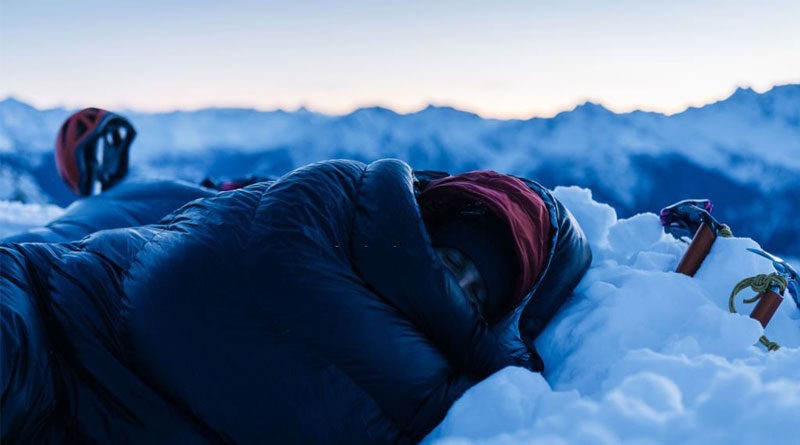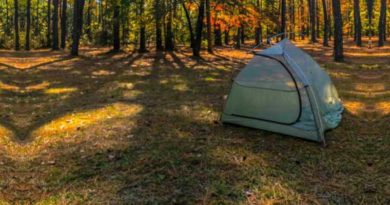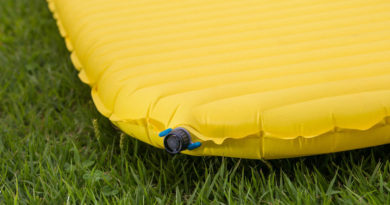Is it OK to sleep outside in winter without a tent?
Sleeping under the stars can be a rewarding experience if you are willing to risk a cold night in the woods. Some people do this because they want to fully comprehend their gear’s ability to keep them warm. Sleeping without a tent is a great way to see if your sleeping system can keep you warm in cold weather. Going without a tent also relieves some of the weight on your shoulders, as tents are among the heaviest items in your backpack. However, there are some dangers to sleeping outside. These dangers primarily include severe weather and animal attacks.
Below I have described the pros and cons of sleeping without a tent while winter camping. So keep reading to learn more.
Why sleep without a tent?
As I previously stated, sleeping under the stars can be a rewarding experience. It is not the same as spending the night in a tent. You get a true sense of outdoor camping. Because you don’t need to set up a tent, this method is quick. You can use this method to sleep if you’ve been hiking all day and don’t have the energy to set up a tent. Finally, not using a tent can relieve some of the weight on your shoulders while also freeing up space in your backpack for other gear. When not carrying a tent, you can opt for a fluffier sleeping bag and a plusher sleeping pad.
What do you need?
To sleep under the stars without a tent you need to have the following things:
- Groundsheet: A groundsheet is necessary because it keeps your sleeping pad clean. It also protects your pad from being punctured by sharp rocks and roots on the ground where you will be sleeping. It keeps your sleeping system dry if the ground is wet.
- Sleeping pad: The next thing you need is a sleeping pad. The pad will provide insulation from the cold ground. Make sure you have a cold weather sleeping pad or a 4-season sleeping pad if you are planning winter camping outside the tent. For example, Therm-a-Rest NeoAir XTherm is an excellent option to consider for 4-season camping. It is lightweight and has a good R-value (7.2) that will keep you insulated from the cold ground.
- Sleeping bag: Choosing the right sleeping bag for sleeping outside in winter is very important. That’s because most sleeping bags are supposed to use inside tents and they might not provide the claimed warmth outside under the stars. So, choose a sleeping bag that has a little more warmth for the weather where you are planning to camp. For example, if you normally use a 15°F sleeping bag in a tent when winter camping, get a sleeping bag that is rated to 5°F or even 0°F for outside sleeping.
- Pillow: You also need a pillow for a comfortable experience. A pillow provides support to your neck while maintaining a good body posture. Keep in mind that you don’t need a dedicated pillow. You can use your jacket or stuff your clothes in a stuff sack and use it as a pillow. However, if you are planning to take a dedicated pillow with you, Sea to Summit Aeros Pillow is a good option to consider. It is lightweight and provides good head and neck support.
- Mosquito head net: While mosquitos and ticks remain inactive during winter, it is still a good idea to take precautions and keep yourself safe and protected. Blacklegged ticks bite even during the winter season although the risk of contracting an illness is lower compared to spring and summer.
So, if you have the above-mentioned gear, you can safely and comfortably sleep outside.
Is it safe to sleep outside?
It is not as safe as sleeping inside a tent but you can make it safe. To prevent animals from coming too close, it is recommended to keep your food at least 100 feet away. You can also hang your food up in the tree to keep it protected from animals. National Park Service recommends that you should keep your food away from you so that animals like bears and raccoons don’t come close to you. The other thing to consider is the weather. Getting wet and cold is the main risk in the winter. So, it is always a good idea to check the weather forecast before planning your winter camping adventure.
Where to sleep?
Whether you are sleeping with or without a tent, choosing the right spot is very important. Make sure the place is good enough for spending a night. The place needs to be sandy, flat, and dry. You can remove excess ice and make the surface flat. Do not sleep directly on the ice as it will be too cold at the night. You want to make sure your campsite is near to a water source. That’s because you need water for cooking, washing, and drinking, of course. Look for a place that is a little higher than the rest of the area. This will ensure you don’t wake up in a lake.
Watch the weather
No forecast is accurate but you can guess if or when it will rain and how cold it might get. Rain isn’t the only thing to look for, you also need to look at how windy is it going to be and how snowy is it going to be. The minimum temperature to sleep (with a sleeping bag and pad) outside safely is 0°F. Anything lower than this can be too risky even with a proper sleep setup. However, if you are not fully prepared, you are at higher risk even around 10 to 50°F outside if it’s raining with a stiff breeze. Also, keep in mind, some experienced campers camp even at -40°F without any problem at all.




